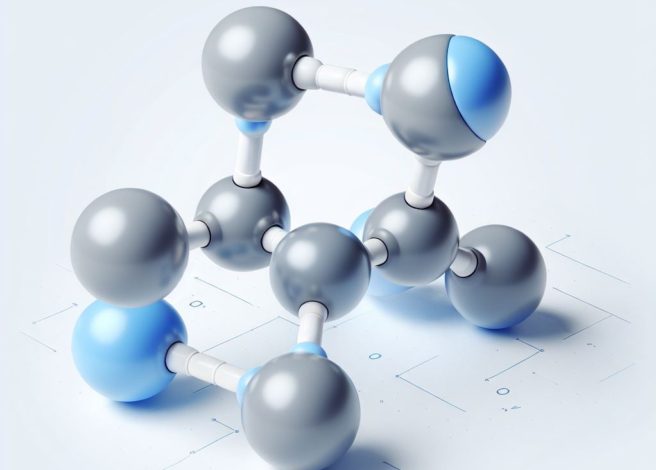At a Glance
- Nitrogen flushing extends freshness by replacing oxygen in packages — slowing browning in produce and oxidation in meats and cheeses.
- Fresh produce gets a head start: reducing oxygen to 5–8% right away helps maintain color and quality.
- High-barrier packaging and MAP work for proteins: aiming for near-zero oxygen to preserve flavor and safety.
- Easy to implement, with add-on equipment and testing tools delivering longer shelf life, less waste, and happier customers.
Did you know that Nitrogen flushing extends freshness in food packaging? “Nitrogen flushing” may sound like something from a comic book origin story. But in today’s competitive food industry, it means something completely different. Nitrogen gas flushing is a powerful tool, but only used when needed. But what exactly is it? How is it done? Is it safe?
This week, we connected with Jeff Brandenburg, Founder and President of The Qfresh Lab/JSB Group, LLC. Brandenburg shared his perspectives on fresh food packaging innovation, drawing from his extensive 45+ year career in packaging technology. His expertise is grounded in Chemical and Biomedical Engineering and Food Safety, complemented by his dual roles as an industry advisor and university lecturer.
This article examines the science behind this technology. It also discusses its practical uses in various food categories.
What is Modified Atmosphere Packaging?
Before diving into nitrogen gas flushing, it’s essential to understand the broader concept of Modified Atmosphere Packaging (MAP). MAP refers to any packaging environment where the internal atmosphere differs from standard air conditions (21.7% oxygen, 300 parts per million (ppm) CO₂, and approximately 78% nitrogen). It simply means that the atmosphere inside the package differs from the ambient atmosphere outside.
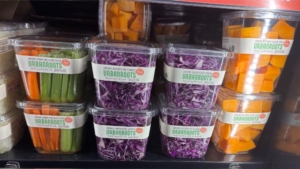
MAP comes in two primary forms:
Passive MAP: The food product’s natural respiration changes the internal atmosphere over time. Fresh produce is alive and needs oxygen even when cut. When sealed in packaging, it consumes oxygen and releases carbon dioxide, slowly altering the atmosphere inside the package.
Active MAP: The packaging process changes the atmosphere. This often uses techniques like nitrogen gas flushing or vacuum sealing. This means that before it’s sealed, nitrogen gas is infused into the package.
Why Nitrogen for Gas Flushing?
The idea of putting gas into a food container may sound strange and even a little scary, which is why the choice of nitrogen gas is so important. Nitrogen is the preferred gas for flushing applications for several compelling reasons:
- Inert properties: Nitrogen is an inert gas that doesn’t react with food. This makes it great for keeping flavor and appearance intact. It’s basically one of the gases that can proudly say that it’s “drama-free.”
- Abundance and cost: Nitrogen makes up 78% of our atmosphere and is readily available and cost-effective compared to noble gases like argon.
- Safety: Nitrogen presents no food safety concerns, as it’s naturally in our air.
Different Foods, Different Approaches
Fresh Produce: The “Kickstart” Approach
Nitrogen flushing is especially important for fresh fruits and vegetables. It works differently than it does for other types of food. Instead of flushing with nitrogen (N₂) to completely eliminate oxygen, nitrogen flushing for fresh produce provides what industry experts call a “kickstart.”
Take leafy greens like romaine as an example. When these products are freshly cut, they’re susceptible to enzymatic browning (aka “pinking”), which occurs in the presence of oxygen. This visual defect doesn’t pose a food safety problem but can quickly lead consumers to turn away from the product. It simply appears unappetizing. Think of it this way: Fresh-cut produce can take 3-5 days to lower the internal oxygen levels from 21% to about 3-5%. For fresh produce prone to enzymatic browning, this amount of time is too long.
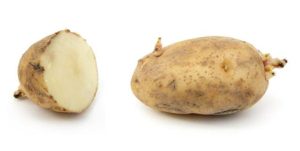
Nitrogen flushing gives your produce a head start. Immediately lowering oxygen levels to 5-8%, your product is closer to that ideal range from day one. The produce still does the rest of the work naturally, just much faster — minimizing enzymatic browning, preserving crucial days of shelf life when every day counts. It’s like giving your produce a running head start in the race.
This approach is particularly valuable for products prone to enzymatic browning, including:
- Apples
- Avocados
- Mangoes
- Iceberg lettuce
- Romaine lettuce
- Butterhead lettuce
- Potatoes
Nitrogen flushing helps extend the life of the produce, but it works best with breathable packaging, which may include micro-perforations, but not necessarily. It’s not a substitute. The transmission rate controls the gas exchange, and nitrogen flushing gives a vital advantage against discoloration.
Meats, Cheeses, and Shelf-Stable Products: The Elimination Approach
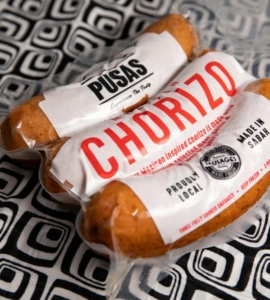 The strategy shifts dramatically regarding meat, cheese, and shelf-stable products like potato chips. Oxygen becomes the guest that nobody invited and certainly isn’t drama-free.
The strategy shifts dramatically regarding meat, cheese, and shelf-stable products like potato chips. Oxygen becomes the guest that nobody invited and certainly isn’t drama-free.
Here, the goal is to remove as much oxygen as possible — often down to 0.005% residual oxygen — and keep it out.
Why? Oxygen is the primary culprit in:
- Fat oxidation (rancidity)
- Color degradation in meat
- Accelerated spoilage
These products use high-barrier packaging materials. Unlike produce packaging, these materials stop gas from entering the package. For these applications, vacuum packaging can be an effective alternative to nitrogen flushing.
Implementation: Practical Considerations
Adding nitrogen flushing capabilities to your production line is surprisingly straightforward. Most modern packaging equipment manufacturers offer nitrogen flushing as a standard add-on feature. The process typically involves:
- Placing the product in the container
- Flushing the headspace with nitrogen gas
- Immediately sealing the package to retain the modified atmosphere
Investing in oxygen/carbon dioxide measurement equipment is highly recommended for quality control purposes. These meters, while representing an investment, allow businesses to:
- Verify proper flushing levels
- Detect package leaks
- Monitor atmosphere changes during shelf-life testing
Industry experts strongly recommend that all processors and retailers handling significant volumes of packaged foods maintain these testing capabilities in-house.
Beyond Nitrogen: Other Active MAP Technologies
 While nitrogen flushing dominates the active MAP landscape, other technologies include:
While nitrogen flushing dominates the active MAP landscape, other technologies include:
- Oxygen absorbers: Small packets containing iron powder that chemically bind with oxygen inside the package.
- Carbon dioxide flushers: These are particularly useful for meat products with desired antimicrobial properties.
- Desiccants: These are more common in dry goods to absorb moisture, rather than modify gas composition.
What Is the Business Case for Nitrogen Flushing?
Implementing nitrogen flushing technology offers compelling returns:
- Extended shelf life: Particularly significant for products prone to enzymatic browning.
- Reduced waste: Fewer rejected products means improved profitability.
- Expanded distribution range: Longer shelf life enables reaching more distant markets.
- Enhanced consumer satisfaction: Better-looking, better-tasting products drive repeat purchases.
Nitrogen Gas Flushing: From Science to Results
In today’s food industry, freshness isn’t just a quality metric — it’s currency. And nitrogen gas flushing might be your untapped gold mine.
This technology isn’t merely a fancy add-on for your packaging line. When used correctly, it’s a strategic weapon that can significantly boost your bottom line. Consider it the difference between a participation trophy and winning the game.
For produce processors facing the “browning beast,” nitrogen flushing is their go-to solution. It works harmoniously with their packaging design, like peanut butter with jelly. For meat and cheese producers, it works like a security system. It stops the oxygen thief from stealing the quality of their product. 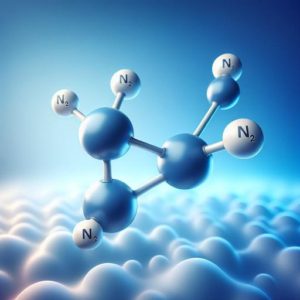
Remember: nitrogen flushing isn’t a magic wand you can wave at any product. Success requires knowing the “how,” “when,” and “why” of implementation. After all, you wouldn’t use a hammer to change a lightbulb, would you?
The fresh food industry moves fast. Your products need to last longer, and your customers demand better quality. Nitrogen might just be the element your business has been missing on its periodic table of success.
Are you looking to know more about maximizing shelf life? Visit our Learning Center today!
Interested in learning more about The QFresh Lab/JSB Group, LLC? Visit their website or contact them directly.

